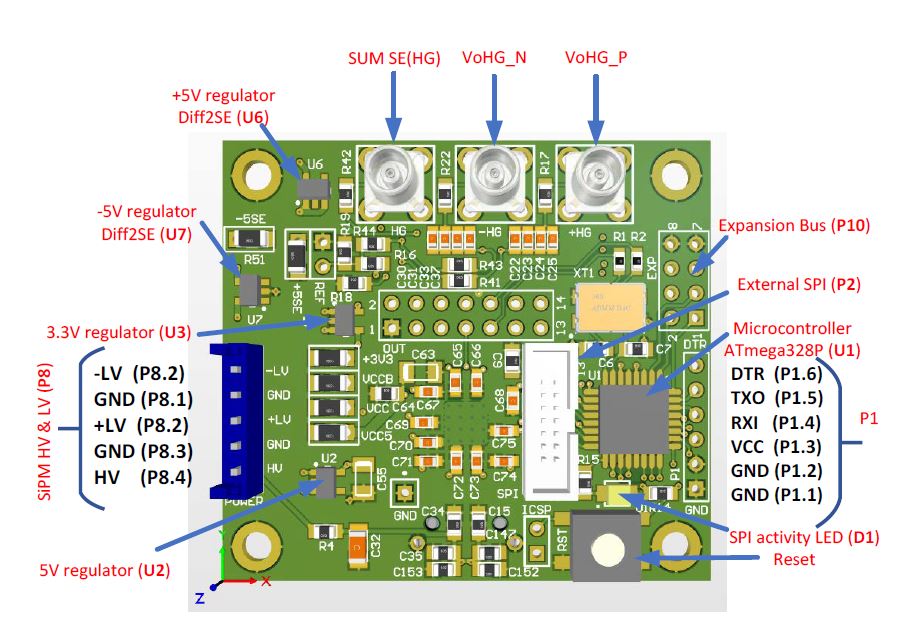
MUSIC R1
MUSICR1: 8 channel Multiple Use IC for SiPM anode readout
8 channel SiPM anode readout ASIC based on a novel low input impedance current conveyor.
The characteristics of the MUSIC R1 chip are:
- 8 channels
- Current mode input.
- Low input impedance (32Ohm).
- Adjustable input node DC voltage
- Zero components interface between sensor and device
- High bandwidth for signal sum (500MHz)
- 150MHz BW for individual channels
- High dyn. range to operate SiPM at high over-voltage
- Power consumption is about 30mW/ch and 200mW for 8 ch sum
Il MUSIC R1 ha le seguenti tre modalità operative:
1) SiPM pixel summing in differential mode
2) individual analog single ended (SE) channels
3) digital outputs
Moreover, a trigger pulse is provided by performing an OR between any binary signals and an output current for an external slow integrator is available.
Digital signals can be read by a dedicated signal (Fast OR).
Typical application circuit:
Figure 1. Typical application schematic. A 1uF capacitor should be placed close to the power pin, due to transient high current consumption for input signals in the range of 10mA.
Functional block diagrami:
The MUSICR1 has been designed for multiple purposes, including, for instance the read out of SiPM’s for the Cherenkov Telescope Array (CTA) cameras. Figure 2 depicts the different functionalities of the chip.

Figure 2. Functional block diagram.
A novel low input impedance input stage based on a bipolar current mirror with double feedback loop is employed for SiPM anode readout. The Low Frequency feedback loop controls the dc voltage of the input node. The High Frequency feedback
path keeps low the input impedance at signal bandwidth and thus timing behavior of the SiPM is not affected.
The circuit contains a tunable Pole Zero Cancellation (PZ shaper) of the SiPM recovery time constant to deal with different sensors (up to 100ns). The shaper reduces the peak duration of the signal and the tail produced by the sensor. The PZ cancellation can be used or bypassed in any operation mode..
All these parameters can be tuned using the standard Serial Peripheral Interface SPI digital control.

Figure 3. Typical signal of Tao= 40ns
The eMUSIC evaluation board can be used for testing the enhanced Multiple Use SiPM IC for photodetector readout. It provides a multipurpose framework for developing different applications, in prototype or preindustrial phase or long series.

Evaluation Board (Top)

Evaluation Board (Bottom)
Evaluation board functionalities:
• 8-channel SiPM readout over 20-pin connector with HV..
• MCX outputs (the pattern is also compatible with SMA and LEMO connectors):
- 2 differential outputs (high gain) with the sum of the channels
- Single-ended with the sum of the channels (high gain)
• Header connector including 8 single ended, HG and LG differential and fast OR trigger output.
• Configuration over SPI with 14-pin connector (P2). (Microcontroller is bypassed in this mode)
• Configuration over UART with 6-pin connector (P1).
• Non-volatile ASIC configuration: EEPROM.
- 100,000 write/erase cycles
• Plug & Play: a microcontroller loads factory calibration at startup.
• Power supply can be shared between a group of N boards.




